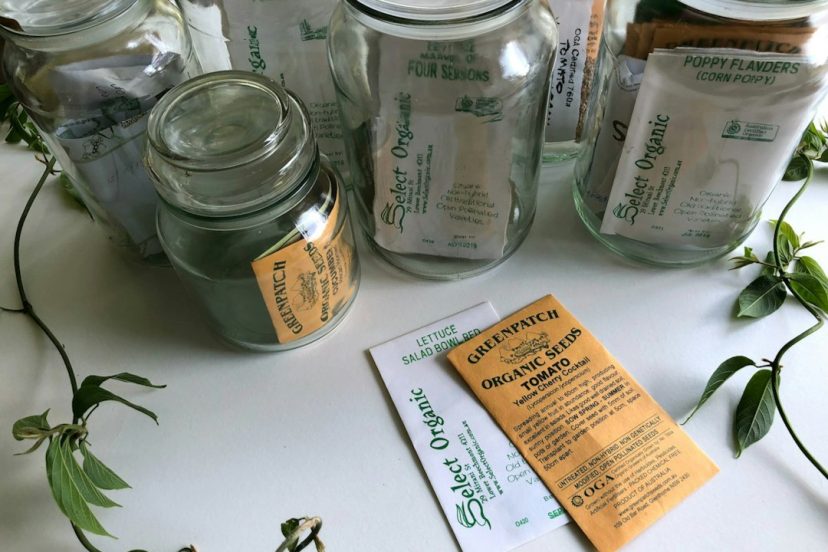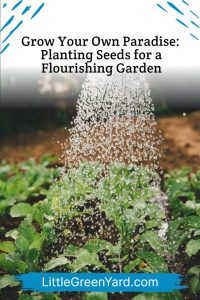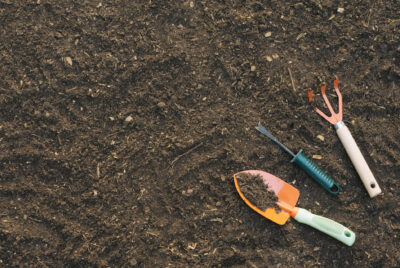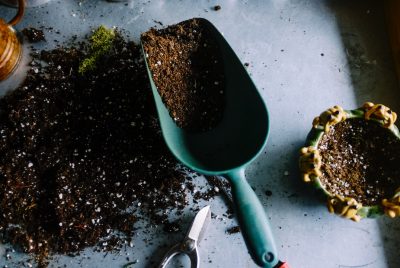Grow Your Own Paradise: Planting Seeds for a Flourishing Garden
Gardening is a rewarding and fulfilling hobby that brings immense joy and satisfaction. Whether you have a small balcony garden or a sprawling backyard, the act of nurturing plants and watching them grow is a truly magical experience. Not only does planting seeds in your garden provide you with beautiful flowers and delicious fruits and vegetables, but it also offers numerous physical, mental, and emotional benefits.
One of the greatest joys of gardening is the ability to grow your own food to eat local seasonal produce. There is something incredibly satisfying about being able to step outside your door and pick fresh herbs for dinner or gather a bouquet of vibrant blooms to brighten up your home. By growing your own produce, you have complete control over what goes into your food, ensuring that it is free from harmful pesticides and chemicals. Additionally, the act of tending to plants and watching them flourish can be incredibly therapeutic and calming, providing a much-needed escape from the stresses of daily life.
Choosing the Perfect Seeds: Tips for Selecting the Right Plants for Your Garden
When it comes to choosing seeds to grow in your garden, it’s important to consider factors such as your climate, soil type, and personal preferences. Understanding your climate is crucial as different plants thrive in different conditions. Some plants require full sun, while others prefer shade or partial shade. Take the time to research different varieties of plants and their specific requirements. Some plants may require more water or sunlight than others, while some may be more resistant to pests or diseases. By selecting the right varieties for your garden, you can set yourself up for success and enjoy a bountiful harvest.
In addition to climate considerations, it’s important to choose plants that fit your space and needs. If you have a small garden or limited space, opt for compact varieties or plants that can be grown vertically. On the other hand, if you have ample space, you can experiment with larger plants or even create a dedicated vegetable patch.
Soil Preparation: How to Create a Healthy and Nutrient-Rich Environment for Your Plants
Before planting your seeds or seedlings, it’s important to prepare your soil to create a healthy and nutrient-rich environment for your plants to thrive. Start by testing your soil to determine its pH level and nutrient content. Creating a balanced pH level is crucial for optimal plant growth. Most plants prefer a slightly acidic to neutral pH range. If your soil is too acidic or alkaline, you can adjust it by adding lime to raise the pH or sulfur to lower it, respectively.
As for the nutrient content, it is important that your soil is nutrient rich to give the seeds or seedlings a boost in the initial growth phases. Adding organic matter, such as compost or well-rotted manure, is essential for enriching the soil and providing essential nutrients for your plants. Organic matter helps improve soil structure, retain moisture, and promote beneficial microbial activity. Spread a layer of compost or manure over the top of your soil and work it in using a garden fork or tiller.
In addition to organic matter, it’s important to provide your plants with the necessary nutrients they need to grow and thrive. This can be done by adding a balanced fertilizer that contains essential nutrients such as nitrogen, phosphorus, and potassium. Be sure to follow the instructions on the fertilizer package for proper application rates. Or opt for an organic garden where you prepare your own fertilizers for your garden and be sure that it is free of synthetic chemicals.
Planting Techniques: Best Practices for Sowing Seeds and Transplanting Seedlings
Knowing when to sow your seeds is key to successful gardening. Different plants have different planting times, so it’s important to consult seed packets or gardening resources for specific information. Some plants, like tomatoes and peppers, need to be started indoors several weeks before the last frost date, while others can be directly sown into the ground.
Proper spacing and depth are also important factors to consider when planting seeds or transplanting seedlings. Overcrowding can lead to competition for resources and poor growth, so be sure to follow spacing recommendations for each plant. Dig a hole that is deep enough to accommodate the roots of the plant, gently firm the soil around it and water it. Fill up the hole with more soil if the watering further compact the soil inwards.
Caring for seedlings is crucial to their success. Keep them well-watered and protected from extreme temperatures or harsh weather conditions. If you started the seedlings from seeds indoors, gradually acclimate them to outdoor conditions by placing them outside for a few hours each day, gradually increasing the time over the course of a week. This will help prevent transplant shock and ensure that your seedlings thrive in their new environment.
Watering and Fertilizing: Essential Tips for Keeping Your Garden Healthy and Thriving
Proper watering is essential for keeping your garden healthy and thriving. Different plants have different water needs, so it’s important to understand the specific requirements of each plant. Some plants, like succulents, prefer dry conditions and should be watered sparingly, while others, like tomatoes, require consistent moisture.
As a general rule for most plants (excluding succulents as mentioned before), to determine when to water, check the moisture level of the soil by sticking your finger about an inch into the ground. If it feels dry at that depth, it’s time to water. When watering, aim to provide a deep soak rather than a light sprinkle. This encourages plants to develop deep root systems, which makes them more resilient during periods of drought.
To water your plants in the garden, it is important to invest in a good soaker hose! Some considerations include having the right length, the material of the hose, quality of the hose and diameter of the hose that suits your garden watering regime. Make sure you check out this checklist for buying soaker hose for your garden!
Fertilizing
Choosing the right fertilizer is also important for keeping your garden healthy and thriving. There are many different types of fertilizers available, including organic and synthetic options. Organic fertilizers are derived from natural sources and provide slow-release nutrients that feed plants over time. Synthetic fertilizers, on the other hand, provide an immediate nutrient boost but can be more prone to leaching and runoff.
When applying fertilizer, be sure to follow the instructions on the package for proper application rates. Over-fertilizing can lead to nutrient imbalances and can even burn plants. It’s also important to avoid fertilizing during periods of drought or extreme heat, as this can stress plants and increase the risk of fertilizer burn.
Pest Control: Natural and Effective Ways to Keep Unwanted Visitors Away from Your Plants
Garden pests can wreak havoc on your plants, but there are natural and effective ways to keep them at bay. The first step in pest control is identifying common garden pests. Some common pests include aphids, slugs, snails, and caterpillars. By familiarizing yourself with the pests that are common in your area, you can take proactive measures to prevent infestations.
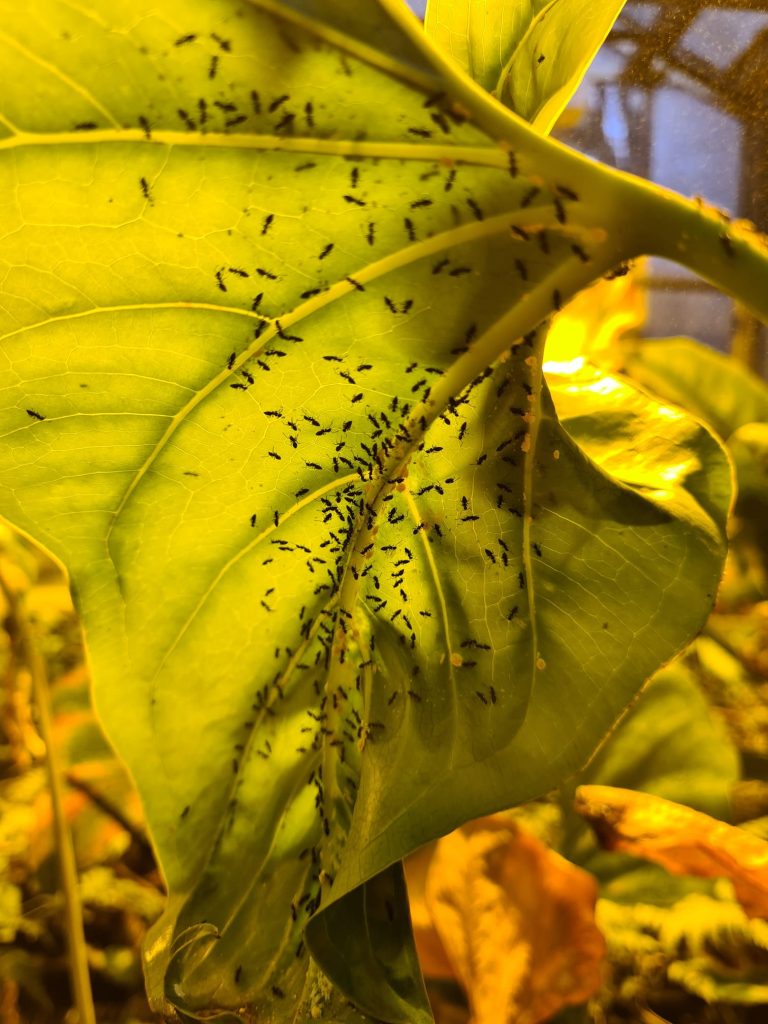
Using natural remedies and deterrents is a safe and effective way to control pests in your garden. For example, planting companion plants that repel pests can help protect your crops. Marigolds, for instance, are known to repel aphids and nematodes, while basil can deter mosquitoes and flies.
Another natural pest control method is using homemade sprays made from ingredients such as garlic, neem oil, or soap. These sprays can be applied directly to plants to deter pests or kill them on contact. Additionally, physical barriers such as row covers or netting can be used to protect plants from larger pests like birds or rabbits.
Preventing pest infestations is key to maintaining a healthy garden. Regularly inspect your plants for signs of pests or disease and take action at the first sign of trouble. Removing infected or infested plants promptly can help prevent the spread of pests or diseases to other plants in your garden.
Garden Design: Creating a Beautiful and Functional Space for Your Plants to Flourish
Creating a beautiful and functional garden design is essential for maximizing the potential of your plants and creating an inviting outdoor space. Start by planning your garden layout, taking into consideration factors such as sunlight, wind patterns, and the size and shape of your space. This will help you determine where to place different types of plants and how to make the most of your available space.
Incorporating different types of plants is key to creating a visually appealing garden. Consider mixing flowers, herbs, vegetables, and even ornamental grasses to add texture and interest. Grouping plants with similar water and sunlight requirements together will make it easier to care for them and ensure that they thrive.
Adding decorative elements such as trellises, arbors, or garden sculptures can add visual interest and create focal points in your garden. These elements can also provide support for climbing plants or create a sense of structure and organization.
Harvesting and Storage: Tips for Picking and Preserving Your Garden’s Bounty
Knowing when to harvest is crucial for enjoying the full flavor and nutritional value of your homegrown produce. Each plant has its own specific signs of ripeness, so it’s important to consult gardening resources or seed packets for specific information. In general, fruits and vegetables are ready to harvest when they are fully colored, firm, and easily detach from the plant.
Properly storing fruits and vegetables is essential for preserving their freshness and flavor. Some crops, like tomatoes or peppers, can be stored at room temperature for a short period of time. Others, like leafy greens or herbs, should be stored in the refrigerator to maintain their crispness.
Preserving herbs and flowers is a great way to enjoy their beauty and fragrance long after the growing season has ended. Herbs can be dried by hanging them upside down in a cool, dry place until they are completely dry. Once dry, store them in airtight containers away from direct sunlight. Flowers can be dried by hanging them upside down or by pressing them between heavy books.
Seasonal Maintenance: How to Keep Your Garden Looking Great Throughout the Year
Seasonal maintenance is key to keeping your garden looking great throughout the year. Pruning and deadheading are important tasks that help promote healthy growth and maintain the shape and appearance of your plants. Remove any dead or diseased branches or flowers to prevent the spread of pests or diseases.
Mulching and weeding are also important tasks that help maintain a healthy and weed-free garden. Mulching helps retain moisture, suppress weeds, and regulate soil temperature. Apply a layer of organic mulch, such as wood chips or straw, around your plants to provide these benefits. Weeding is an ongoing task that requires regular attention. Remove weeds as soon as you spot them to prevent them from competing with your plants for resources. Using a hoe or hand-pulling weeds are effective methods for keeping them under control. Alternatively, you can try out the no-dig gardening method that proved to be effective to suppress weed growth.
Preparing for winter is an important part of seasonal maintenance. Clean up any fallen leaves or debris and remove any dead or dying plants. Protect tender plants from frost by covering them with blankets or burlap, or by moving them indoors if possible.
Enjoying the Fruits of Your Labor and Sharing Your Garden’s Beauty with Others
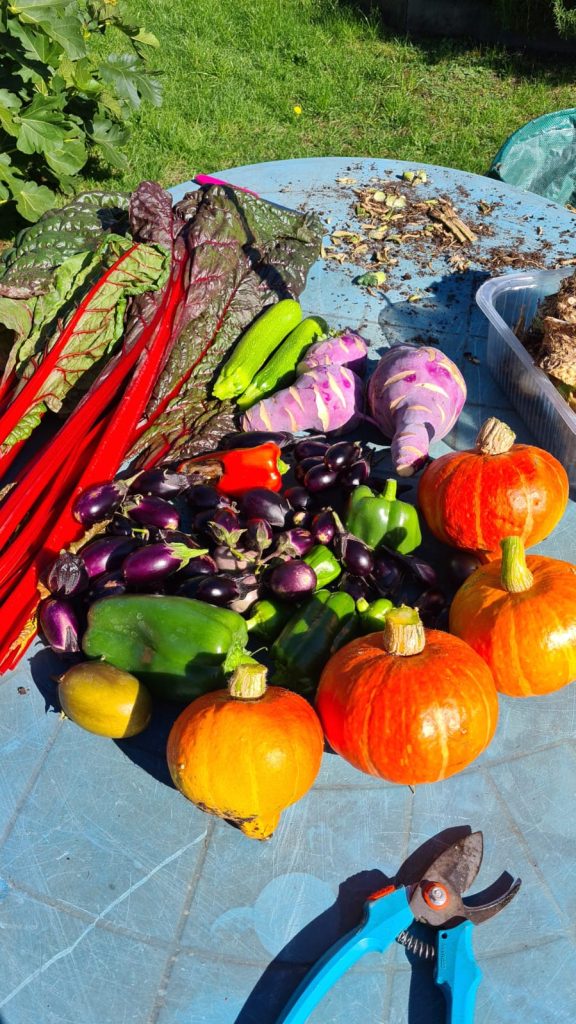
The satisfaction of a successful garden is unparalleled. From the joy of watching seeds sprout to the delight of harvesting your own fruits and vegetables, gardening offers countless rewards. The sense of accomplishment that comes from nurturing plants and creating a beautiful outdoor space is truly fulfilling.
Sharing your harvest with friends and family is a wonderful way to spread the joy of gardening. Whether you give away excess produce or host a garden party, sharing the fruits of your labor with others is a rewarding experience. It can also inspire and encourage others to start their own gardens and experience the joy and satisfaction that comes with growing their own food and flowers.
Growing your own food also allows you to reconnect with Nature, to be mindful of how food is being produced and also get the chance to be outdoors with your garden, no matter big or small. I recently connected with Monique Parker who also wrote a book that you can checked out here! In the book, she wrote about the importance of Nature and the need for us to re-connect to it, for various benefits including our own health.
In conclusion, gardening is a truly magical experience that offers numerous physical, mental, and emotional benefits. By following the tips and techniques outlined in this article, you can create a beautiful and thriving garden that brings you joy and satisfaction year after year. So grab your gardening gloves and get ready to embark on a journey of growth, beauty, and abundance. Happy gardening!
FAQs
What are seeds for gardens?
Seeds for gardens are small, embryonic plants that are used to grow various types of plants in a garden. They are the starting point for most garden plants and come in a variety of shapes, sizes, and colors.
What types of seeds are available for gardens?
There are many types of seeds available for gardens, including vegetable seeds, flower seeds, herb seeds, and fruit seeds. Each type of seed has its own unique characteristics and requirements for growth.
How do I choose the right seeds for my garden?
When choosing seeds for your garden, consider factors such as the climate in your area, the amount of sunlight your garden receives, and the type of soil you have. You should also consider your personal preferences and the types of plants you want to grow.
How do I plant seeds in my garden?
To plant seeds in your garden, you will need to prepare the soil by removing any weeds or debris and loosening the soil. Then, follow the instructions on the seed packet for planting depth and spacing. Water the seeds regularly and provide them with adequate sunlight.
How long does it take for seeds to grow into plants?
The amount of time it takes for seeds to grow into plants varies depending on the type of plant and the growing conditions. Some plants may sprout within a few days, while others may take several weeks or even months to grow.
Can I save seeds from my garden for future use?
Yes, you can save seeds from your garden for future use. However, it is important to properly store the seeds in a cool, dry place to ensure their viability.

